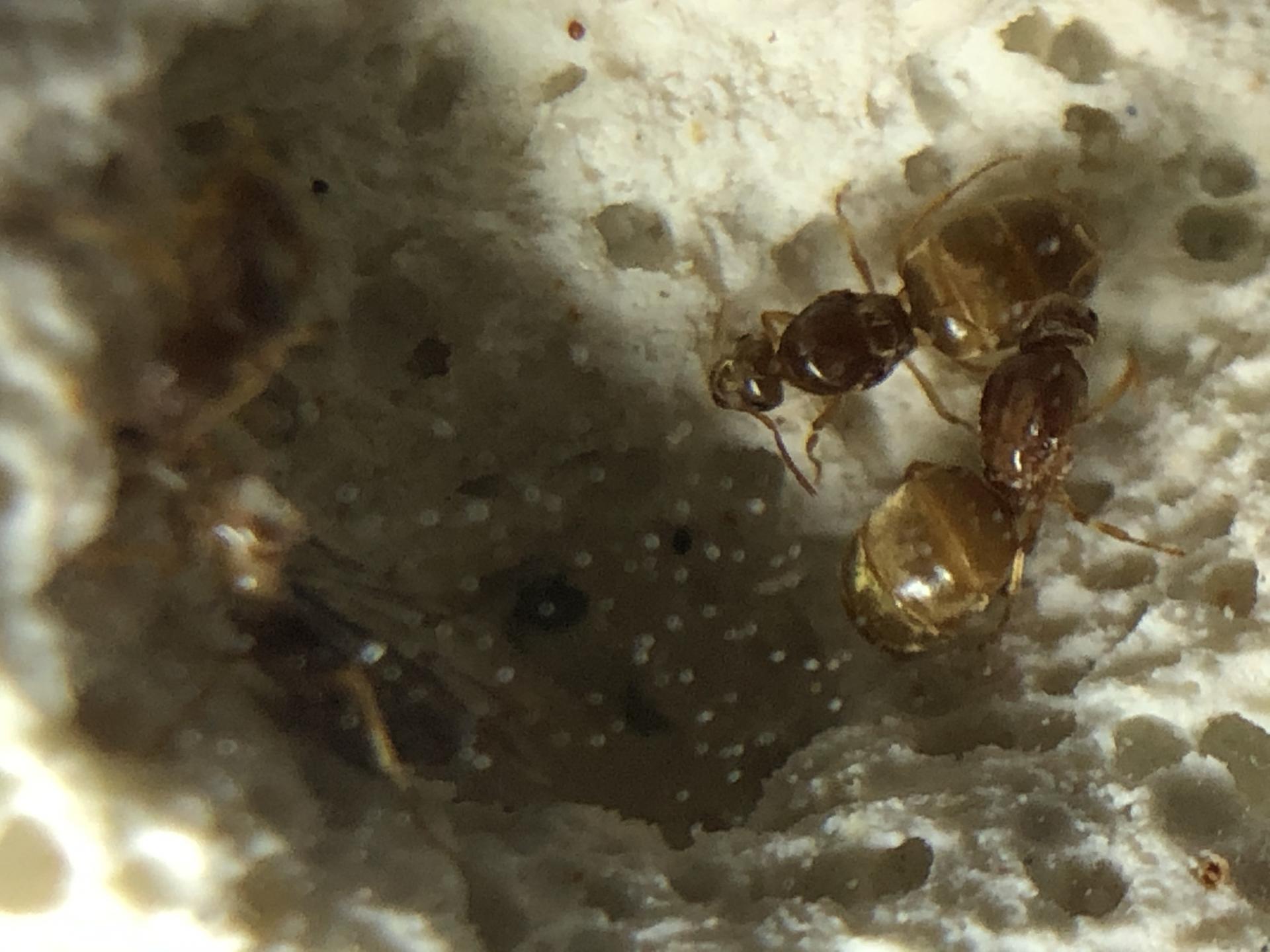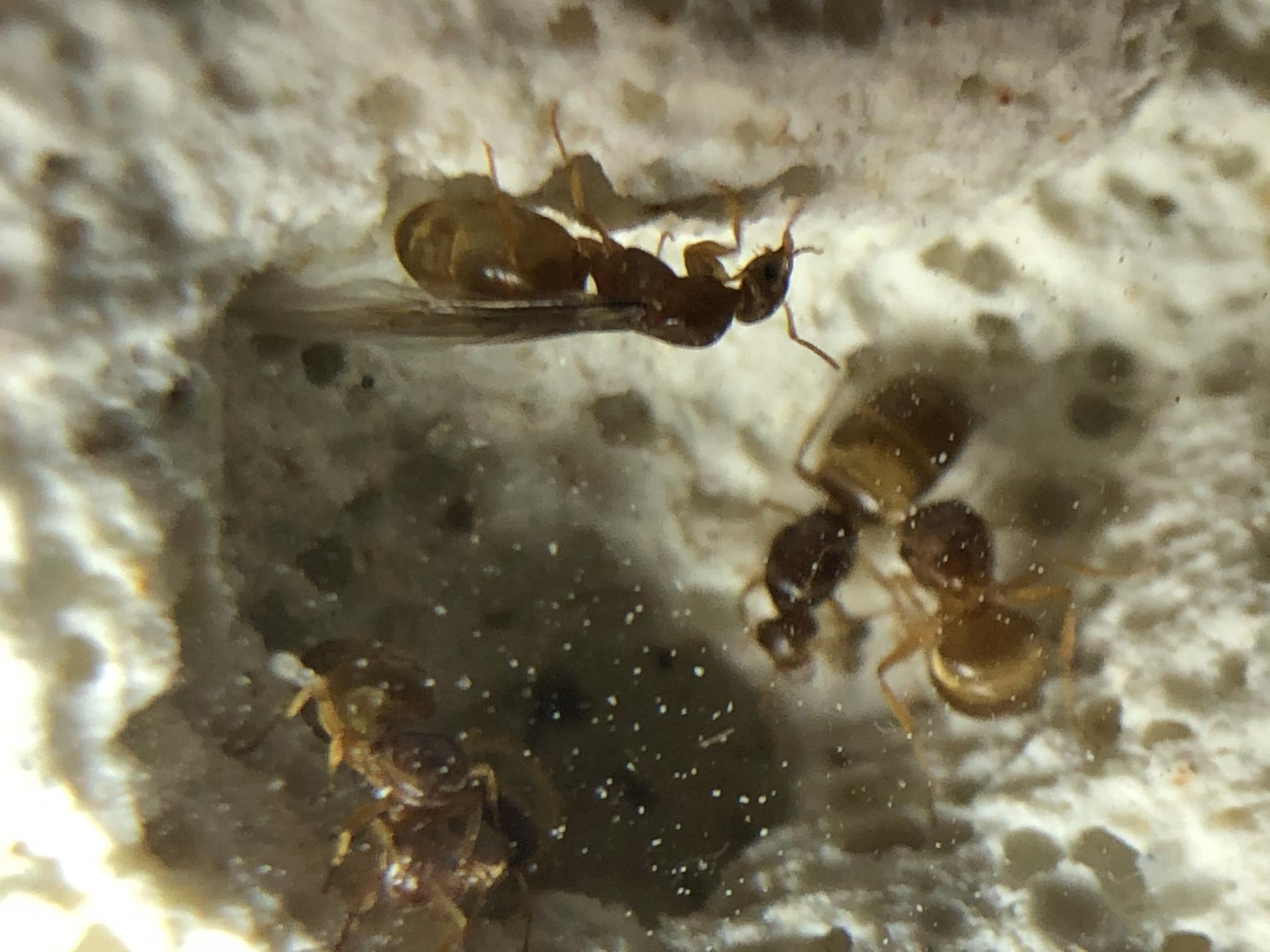- Formiculture.com
- Forums
- Gallery
- Members
- Member Map
- Chat

Northern Arizona - 7/25
Started By
AZ_Ants
, Jul 25 2020 7:09 PM
2 replies to this topic
#1
 Offline
-
Posted July 25 2020 - 7:09 PM
Offline
-
Posted July 25 2020 - 7:09 PM
So I found these tonight, my initial thought was prenolepsis imparis. However those are “winter ants” and don’t typically fly this time of year. We had a very heavy rain last night. I guess I just need a confirmation or correction on this ant.
Location of collection: Backyard amongst dirt/gravel and pavement
Collected this evening around 6:30
Tan/golden color, 8 mm in length
Location of collection: Backyard amongst dirt/gravel and pavement
Collected this evening around 6:30
Tan/golden color, 8 mm in length
#2
 Offline
-
Posted July 25 2020 - 7:15 PM
Offline
-
Posted July 25 2020 - 7:15 PM
You are correct, these are not Prenolepis imparis. They appear to be Lasius, although I am not very familiar with Arizonian species.
#3
 Offline
-
Posted July 25 2020 - 7:22 PM
Offline
-
Posted July 25 2020 - 7:22 PM
I would guess flavus group based on the color of the legs. That doesnt narrow it down very much though, Id need pics under a microscope to tell the species for sure. Specifically of the opened mandibles and the antennal scapes.
- AnthonyP163 likes this
Hi there! I went on a 6 month or so hiatus, in part due, and in part cause of the death of my colonies.
However, I went back to the Sierras, and restarted my collection, which is now as follows:
Aphaenogaster uinta, Camponotus vicinus, Camponotus modoc, Formica cf. aserva, Formica cf. micropthalma, Formica cf. manni, Formica subpolita, Formica cf. subaenescens, Lasius americanus, Manica invidia, Pogonomyrmex salinus, Pogonomyrmex sp. 1, Solenopsis validiuscula, & Solenopsis sp. 3 (new Sierra variant).
1 user(s) are reading this topic
0 members, 1 guests, 0 anonymous users
















